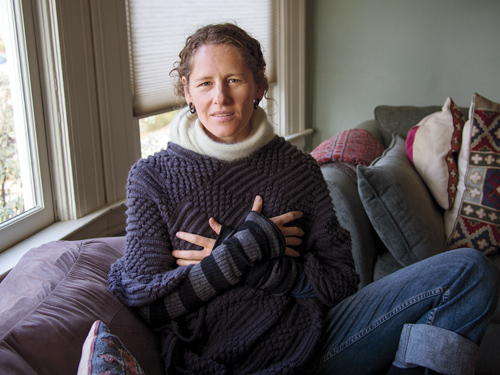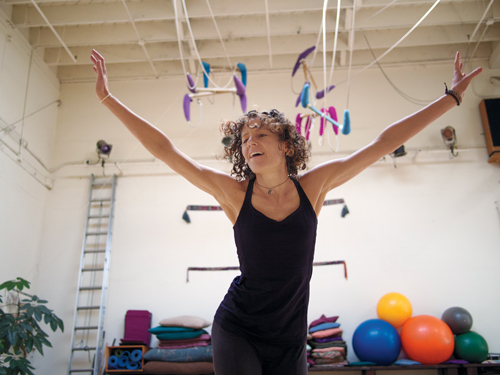By Soo Youn ’96
An ob/gyn became a YouTube sensation when she danced to Beyoncé before her double mastectomy.
[Social Media] Perhaps, like me, you met Deb Cohan ’90 on Facebook. On Nov. 5, Stephanie Young Rosen, a ’90 alumna in Los Angeles, posted a YouTube video introducing her friend: “Harvard-trained ob/gyn, mother of two, had a double mastectomy this morning.”
Like hundreds, then thousands, then millions of others, I clicked. What I saw was six minutes and 14 seconds of joyful dancing to Beyoncé’s “Get Me Bodied,” set inside an operating room at the University of San Francisco’s Medical Center at Mt. Zion. The dancers: Cohan, outfitted in a hospital gown and cap, and the team who would soon perform her surgery.

When Beyoncé posted the video on her Facebook page, it garnered 52 million likes.
“The scrub nurse and I were mirroring each other, and there’s this moment I turn around and pat my heart,” says Cohan, who heads a San Francisco clinic that treats HIV-infected pregnant women. “I was so happy this woman was playing with me, that people went along with this dance.”
The dancing preamble to surgery seemed to co-opt the pity and awkwardness often directed toward those with cancer, and, in doing so, transformed Cohan from patient to phenomenon.
My click echoed exponentially. The next day “Deb’s OR Flash Mob” hit The Huffington Post, the Today show and countless television news broadcasts. Soon several of my Facebook acquaintances—people with no connection to Amherst or cancer—posted the video. I watched it go viral in my very own news feed.
“Facing a double mastectomy with grace takes courage,” declared The Huffington Post. “Facing one with courage and joy is extraordinary.” In an age of self-promotion and snark, Cohan’s dancing proved both real and strangely private, a woman’s postcard to her future, changed self. Beyoncé herself posted the video on her Facebook page, writing, “Deborah, you are awesome!” The post garnered 52 million likes.
“Even though it was being taped, because I wanted my friends to see it, I was completely in the moment,” Cohan told me by phone a month after her surgery, when the YouTube video had been viewed more than 7 million times. Dancing, she says, is “my most direct way of accessing and expressing my emotions, and it seemed like a good way to get out my nerves and get the juju out before surgery.”
Cohan’s other intent was to inspire loved ones to record themselves dancing to the same song, so she could watch their videos as she recovered, when she couldn’t shimmy herself. She subverted her own plans: friends, family and strangers sent videos and photos, which she watched, but Cohan was in a dance class four days after surgery.

People didn’t just send videos. Cohan heard from a nurse in a veterans’ hospital who said the video inspired nurses to dance in their lounge; the music then got soldiers dancing in the hallways. Cohan also danced via Skype with a stranger who had a mastectomy a week after her own.
“Part of what made it so surprising to people is that the paradigm in our culture is to be fearful of illness and death,” Cohan says, “instead of seeing life and death to be linked. Facing death is an opportunity to celebrate life.”
Her Amherst friends were not surprised. Lowell Weiss ’90, a friend since childhood, describes Cohan as “internally motivated to help and care for others, even when it’s not easy to do. I saw it when Deb raced into treating HIV-positive women at a time when a needle stick could have meant a death sentence. I saw it when she became the medical director for the St. James Infirmary, caring for sex workers without a hint of judgment. Most of all, I see it in the way she is there for her friends (including me) during times of crisis, no matter how busy she is delivering babies into this world, or managing clinical trials in Uganda, or teaching students.”
Weiss, who came from Seattle for the surgery and recorded Cohan’s parents dancing in the waiting room, says his friend is both overwhelmed and delighted by the reaction to the video: “She wants others to get out of their victim crouches. She wants people to feel their own power for healing. And she wants to introduce new people to the spiritual value of dance.”
Cohan started chemotherapy on Jan. 9.
Soo Youn ’96 is a Los Angeles-based journalist.